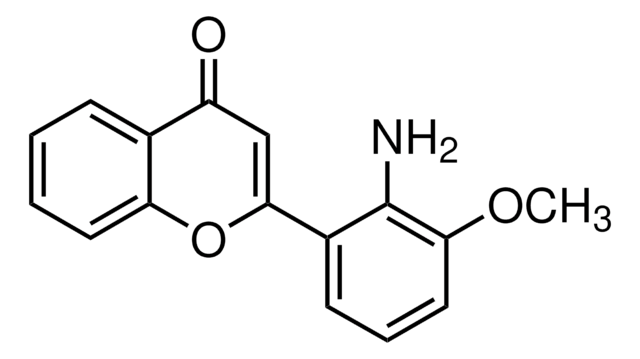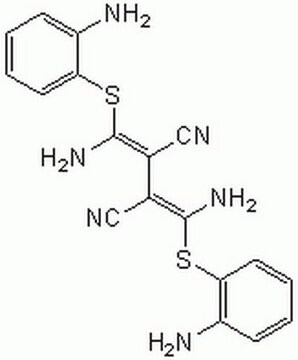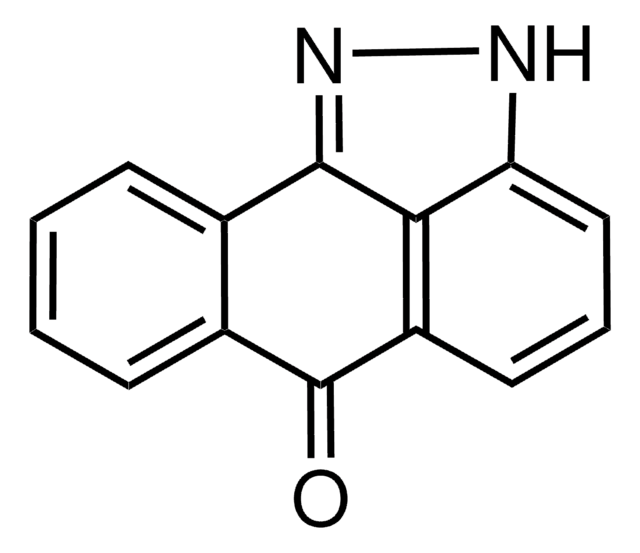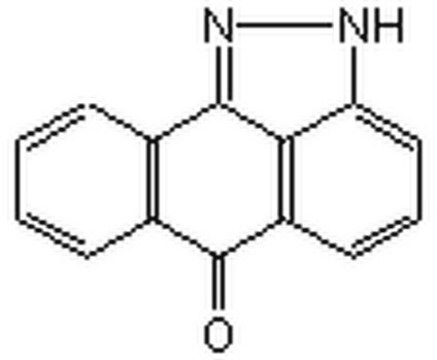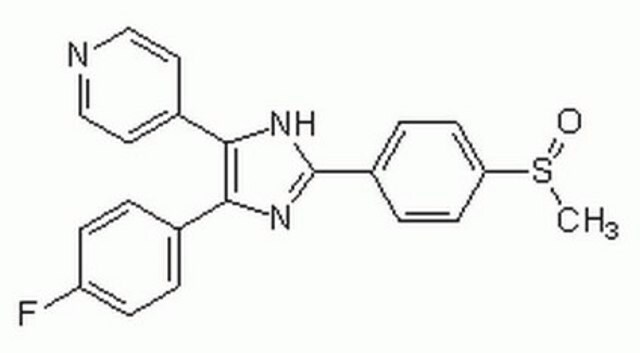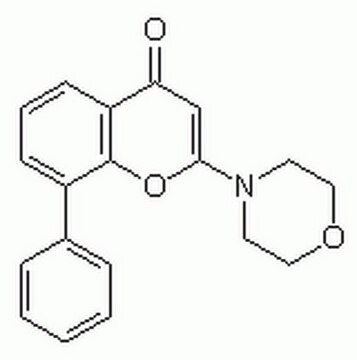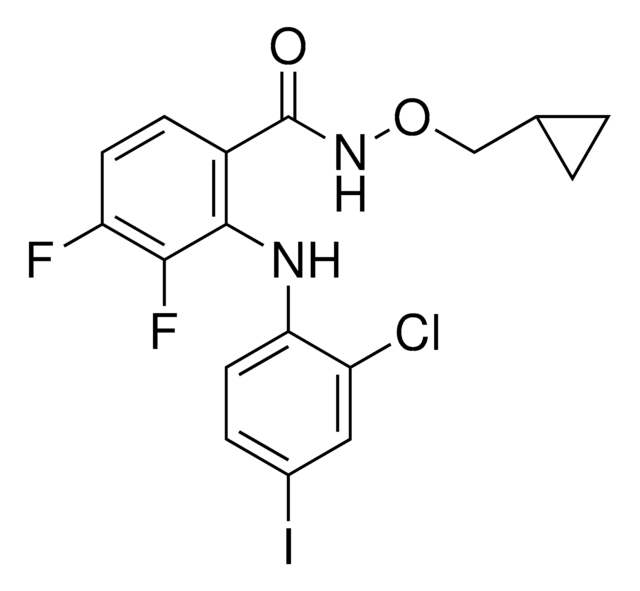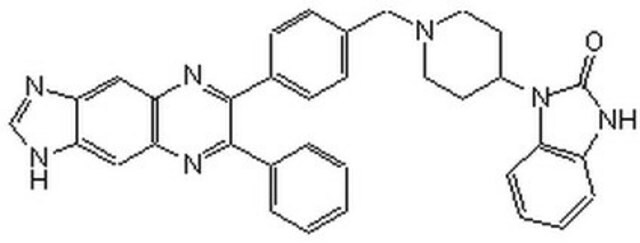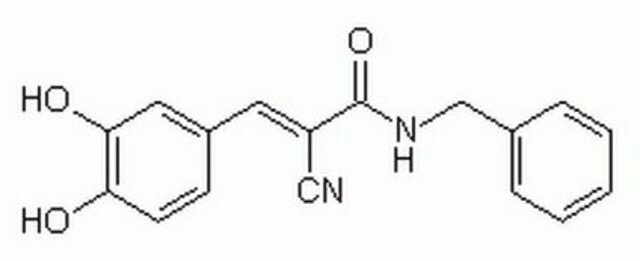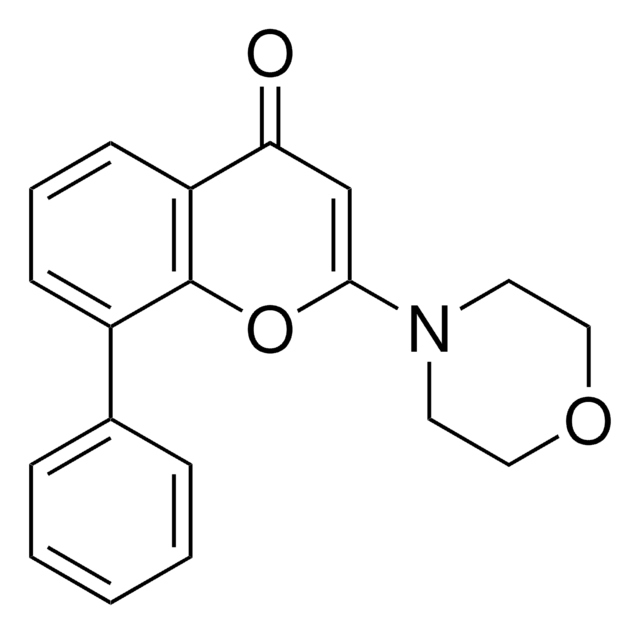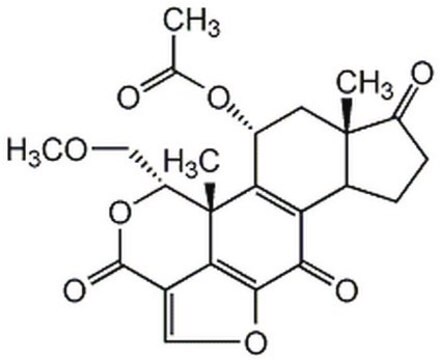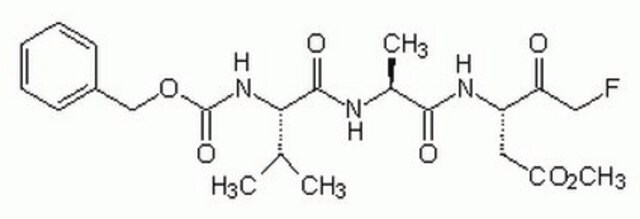513000
PD 98059
PD 98059, CAS 167869-21-8, is a cell-permeable, selective & reversible inhibitor of MAP Kinase Kinase (MEK). Inhibits MAP Kinase activation and subsequent phosphorylation of MAP Kinase substrates.
Synonym(s):
PD 98059, 2ʹ-Amino-3ʹ-methoxyflavone, MEK Inhibitor V
About This Item
Recommended Products
Quality Level
Assay
≥98% (HPLC)
form
solid
manufacturer/tradename
Calbiochem®
storage condition
OK to freeze
protect from light
color
pale yellow
solubility
methanol: 0.7 mg/mL
DMSO: 20 mg/mL
shipped in
ambient
storage temp.
−20°C
InChI
1S/C16H13NO3/c1-19-14-8-4-6-11(16(14)17)15-9-12(18)10-5-2-3-7-13(10)20-15/h2-9H,17H2,1H3
InChI key
QFWCYNPOPKQOKV-UHFFFAOYSA-N
General description
Biochem/physiol Actions
MAP kinase kinase (MEK)
Warning
Reconstitution
Other Notes
Kültz, D., et al. 1998. J. Biol. Chem. 273, 13645.
Dudley, D.T., et al. 1995. Proc. Natl. Acad. Sci. USA92, 7686.
Langlois, W.J., et al. 1995. J. Biol. Chem. 270, 25320.
Pang, L., et al. 1995. J. Biol. Chem.270, 13585.
Waters, S.B., et al. 1995. J. Biol. Chem.270, 20883.
Legal Information
Storage Class Code
11 - Combustible Solids
WGK
WGK 3
Certificates of Analysis (COA)
Search for Certificates of Analysis (COA) by entering the products Lot/Batch Number. Lot and Batch Numbers can be found on a product’s label following the words ‘Lot’ or ‘Batch’.
Already Own This Product?
Find documentation for the products that you have recently purchased in the Document Library.
Customers Also Viewed
Our team of scientists has experience in all areas of research including Life Science, Material Science, Chemical Synthesis, Chromatography, Analytical and many others.
Contact Technical Service